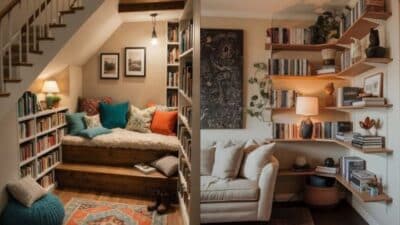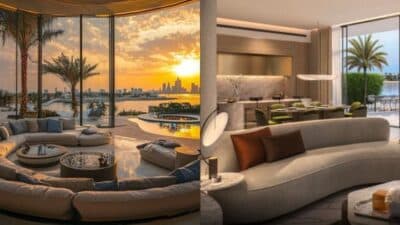Lighting design is more than just illuminating a space—it’s about creating an atmosphere that transforms your house into a truly inviting home. The right lighting can completely change how a room feels, turning even the most sterile environments into warm, welcoming retreats from the outside world. For optimal coziness, choose warm white bulbs with a color temperature between 2700K and 3000K, which emit a gentle, soothing light similar to traditional incandescent lighting.
Creating a cozy lighting scheme involves layering different light sources throughout your space. Consider combining ambient lighting (like recessed fixtures or ceiling lights), task lighting (desk lamps or pendant lights), and accent lighting (wall sconces or table lamps) to add depth and warmth. Indirect lighting options that create a soft glow rather than harsh direct light will instantly make any room feel more comfortable and inviting.
Smart lighting solutions offer incredible flexibility for adjusting your home’s ambiance. With dimmable fixtures, you can easily transition from bright and functional to soft and relaxing as the evening progresses. String lights along window frames, under-cabinet lighting in kitchens, or even subtle under-couch lighting can add unexpected touches of warmth that elevate your space beyond ordinary illumination.
Key Takeaways
- Warm-toned lighting between 2700K-3000K creates the most inviting atmosphere for relaxation spaces.
- Layering different light sources at varying heights adds dimension and prevents harsh shadows in your rooms.
- Dimmable and smart lighting solutions provide flexibility to adjust your home’s ambiance for different activities and times of day.

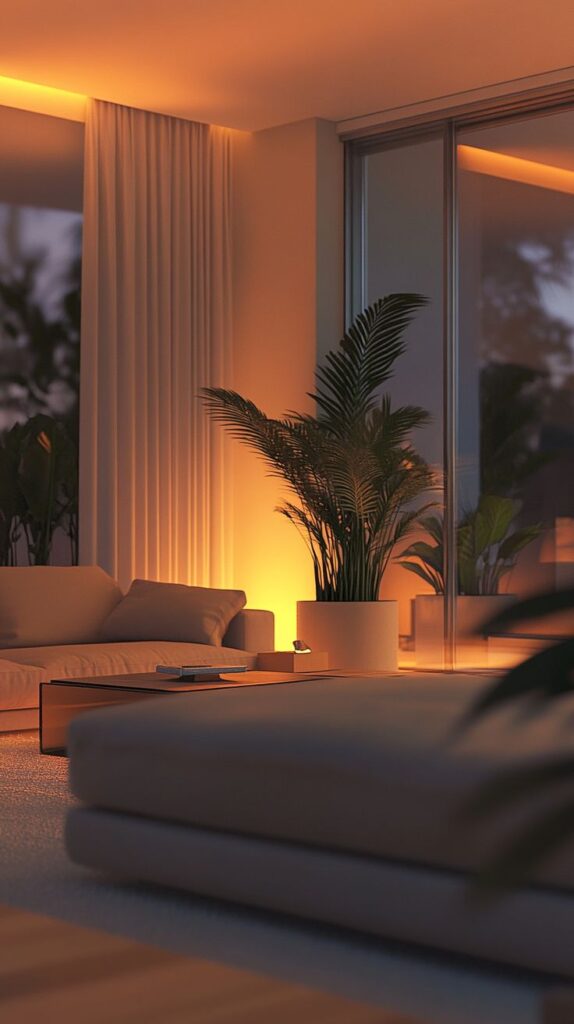
Fundamentals of Cozy Lighting Design
Creating a cozy atmosphere through thoughtful lighting transforms any house into a welcoming home. The right lighting choices directly impact how comfortable and inviting your spaces feel, working on both practical and emotional levels.
Understanding Cozy Lighting Concepts
Cozy lighting begins with temperature selection. Warm white bulbs with color temperatures between 2700K and 3000K emit a soft, yellowish light that creates instant warmth and comfort. These bulbs closely resemble traditional incandescent lighting, making them perfect for relaxation spaces.
Light intensity matters significantly. Lower-watt options provide a gentle ambient glow rather than harsh illumination. Consider dimmable fixtures to adjust brightness based on activities or time of day.
The distribution of light affects coziness too. Avoid ceiling-only lighting that creates sterile, office-like environments. Instead, position light sources at various heights to create visual interest and eliminate harsh shadows.
Cozy lighting elements to incorporate:
- Table and floor lamps with fabric shades
- Wall sconces that direct light upward or downward
- String lights for whimsical charm
- Candles (real or LED) for a flickering effect
The Role of Layered Lighting in Creating Ambiance
Layered lighting combines multiple light sources to create depth and dimension in your space. This approach prevents the flatness that comes from relying on a single overhead fixture.
The three essential lighting layers:
- Ambient lighting – General illumination that fills the room
- Task lighting – Focused light for specific activities
- Accent lighting – Decorative elements that highlight features
Each layer serves both functional and atmospheric purposes. For instance, a reading lamp provides necessary task lighting while adding a warm glow to a corner of your living room.
Varying the heights of your light sources creates visual interest and ensures even distribution. Floor lamps, table lamps, and wall sconces at different levels prevent harsh shadows and create a more welcoming environment.
Key Elements for a Warm and Inviting Home
Strategic placement transforms ordinary lighting into mood-setting features. Position floor lamps behind seating areas to create pools of light that invite relaxation and conversation. Place table lamps on side tables rather than directly in line of sight to avoid glare.
Lampshades significantly impact light quality. Fabric shades in warm tones like amber, cream, or soft gold filter light beautifully. Opaque shades direct light up and down, while translucent options create a diffused glow throughout the room.
Consider natural light integration as part of your cozy lighting plan. Sheer curtains soften harsh daylight while maintaining brightness. This creates a peaceful atmosphere during daytime hours that transitions smoothly to evening lighting.
Quick cozy lighting checklist:
- Use warm-toned bulbs (2700K-3000K)
- Incorporate multiple light sources at various heights
- Install dimmers for flexibility
- Add decorative elements like candles or string lights
- Choose lampshades that complement your color scheme
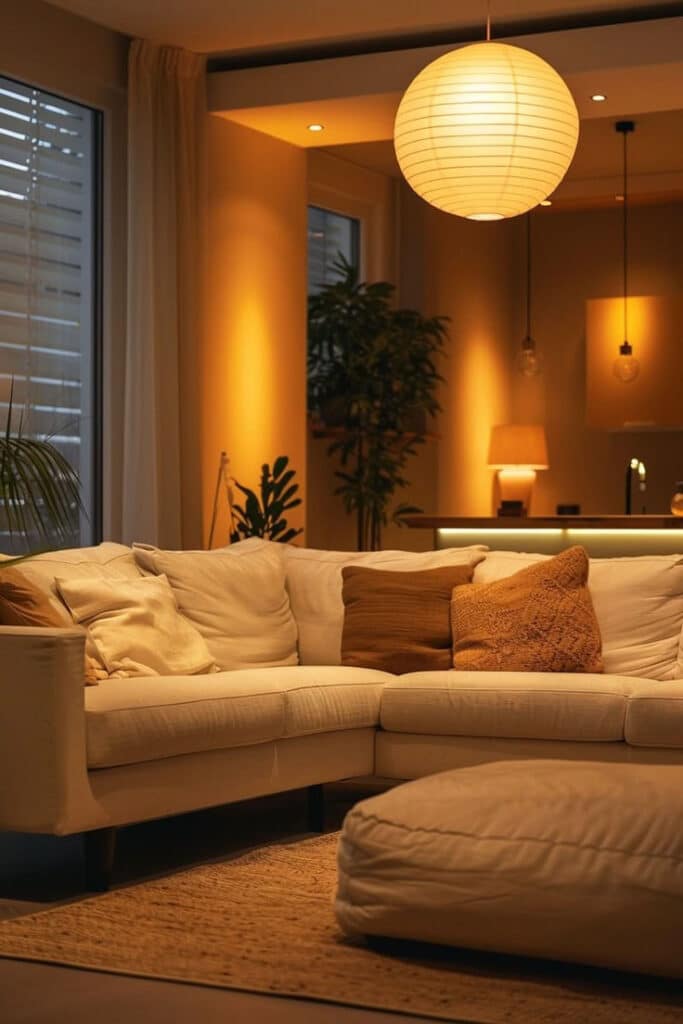
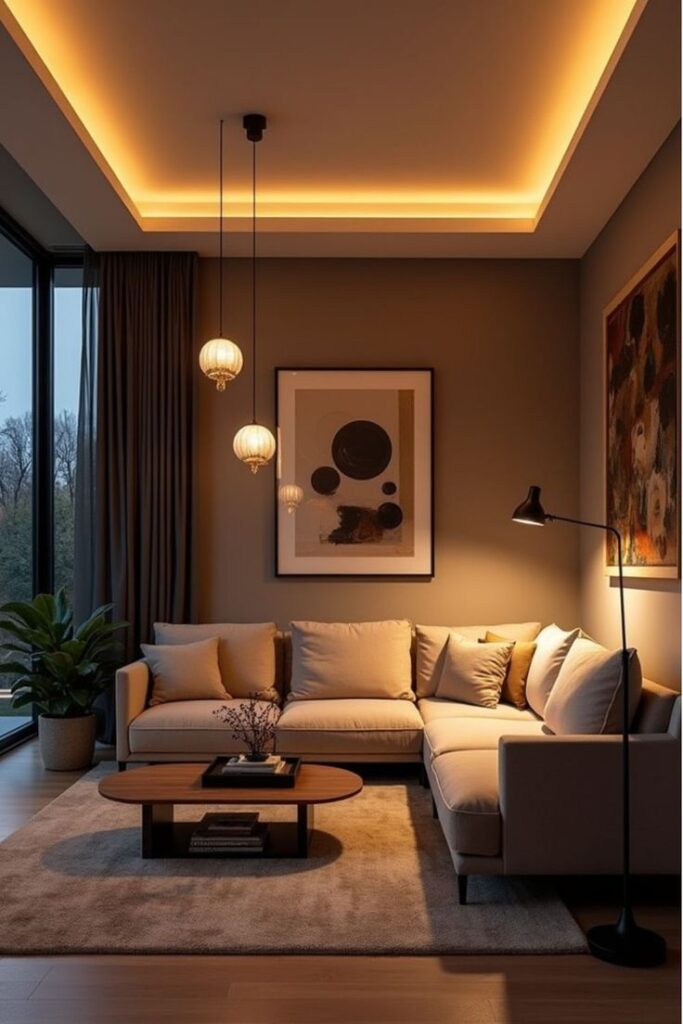
Choosing Lighting Fixtures for a Cozy Home
Selecting the right lighting fixtures can transform your space from ordinary to extraordinarily cozy. The right mix of lighting elements creates layers of warmth and functionality while adding visual interest that complements your interior design.
Table Lamps and Fabric-Shaded Floor Lamps
Table lamps serve as versatile lighting solutions that provide both functionality and style. Place them on side tables in living rooms or on nightstands for reading light that creates a warm glow rather than harsh overhead illumination.
Look for lamps with fabric shades that diffuse light softly throughout the room. Linen, cotton, or parchment shades create a gentle ambiance compared to metal or glass alternatives.
Floor lamps with fabric shades work similarly but can fill empty corners or create reading nooks. Position these beside sofas or armchairs to create intimate spaces for relaxation.
The height of your lamp matters significantly. Your table lamp should sit at eye level when you’re seated to provide proper task lighting without glare.
Accent and Ambient Lighting Solutions
Accent lighting highlights architectural features or artwork while creating a cozy atmosphere. Small spotlights or track lighting directed at paintings or photographs add depth to your space.
String lights offer versatile ambient lighting options. Drape them along window frames, across mantels, or inside glass containers for a subtle twinkle effect that instantly warms a room.
Smart lighting systems allow you to adjust color temperature based on time of day or mood. Program warmer tones (2700-3000K) for evenings to promote relaxation.
Under-furniture lighting strips create a floating effect while providing a soft glow that’s perfect for nighttime navigation. This low-level lighting adds dimension without overwhelming the space.
Statement Chandeliers and Pendant Lights
Chandeliers serve as focal points while providing ambient lighting for dining rooms or entryways. Choose fixtures with dimming capabilities to adjust the mood from bright and functional to soft and intimate.
For cozy appeal, select chandeliers with fabric shades or warm-toned glass rather than crystal or chrome, which can appear cold. Wooden or bronze finishes add warmth to the fixture itself.
Pendant lights work well in clusters or rows above kitchen islands or dining tables. Vary the heights for visual interest or choose oversized pendants for dramatic effect in smaller spaces.
Consider the scale carefully—a too-small fixture can look awkward while an overly large one may overwhelm. Measure your space and follow the rule that a chandelier’s diameter in inches should roughly equal the sum of your room’s length and width in feet.
Wall-Mounted Lights and Wall Sconces
Wall sconces free up surface space while providing indirect lighting that reduces harsh shadows. Install them in pairs flanking mirrors, artwork, or beds for symmetrical, flattering illumination.
Adjustable wall-mounted reading lights offer targeted task lighting without the need for table space. These work particularly well in bedrooms or small living areas where space is at a premium.
Consider the direction of light—upward-facing sconces create a cozy atmosphere by bouncing light off ceilings, while downward-facing fixtures provide more focused illumination for reading or tasks.
Wall lights with fabric shades create softer light compared to exposed bulbs or glass shades. For maximum coziness, choose warm-toned bulbs (2700K) that mimic the golden glow of sunset rather than cooler, bluish tones.
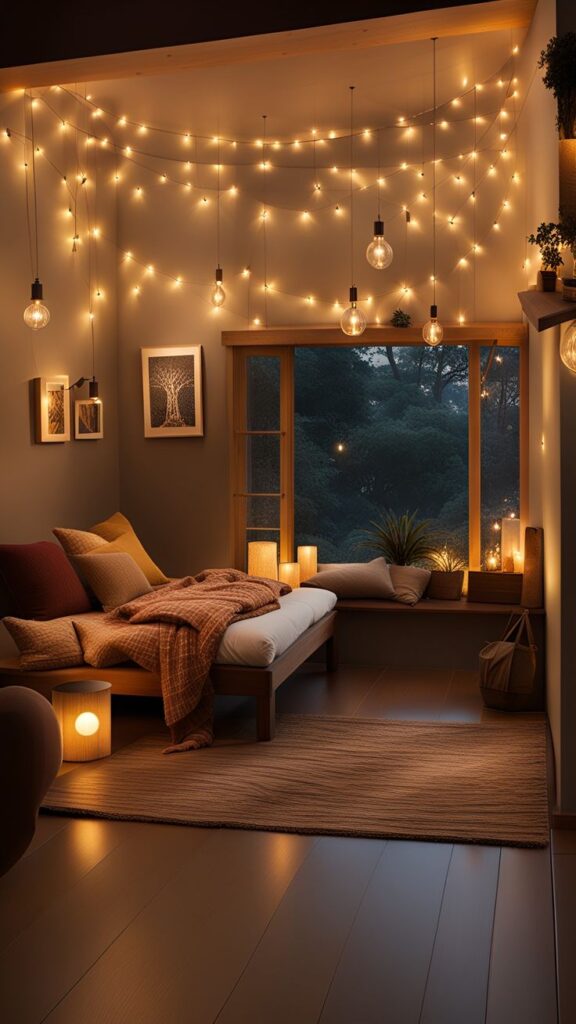
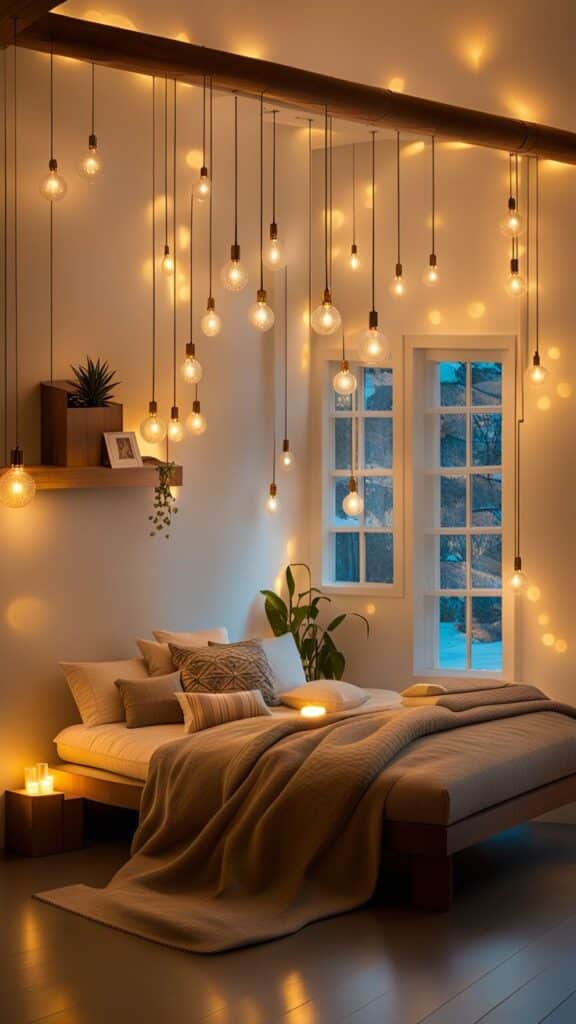
Optimizing Light Quality and Color Temperature
The right lighting transforms a house into a home by creating ambiance and enhancing mood. Understanding color temperature and light quality helps you make intentional choices that support comfort and functionality in your living spaces.
Benefits of Warm-Toned Lighting
Warm-toned lighting creates an inviting, relaxing atmosphere essential for a cozy home environment. Lights with color temperatures between 2700K and 3000K emit a soft, amber glow that mimics the soothing quality of sunset.
This lighting temperature promotes relaxation by triggering the body’s natural wind-down response, helping reduce stress and prepare for sleep. Research shows warm light can increase comfort levels and facilitate better conversations in social settings.
Warm lighting also enhances interior design elements, making wood tones appear richer and skin tones more flattering. Your textiles and furniture colors will look more vibrant under warm light compared to cooler alternatives.
For living rooms and bedrooms, warm light creates intimate spaces that encourage relaxation and connection. You’ll notice this psychological effect immediately when switching from harsh overhead lighting to soft, warm-toned alternatives.
Selecting Bulbs and Dimmer Switches
LED bulbs labeled “warm white” or “soft white” (2700K-3000K) provide energy efficiency without sacrificing the cozy quality of traditional incandescent lighting. These bulbs use significantly less energy while lasting up to 25 times longer than older technologies.
When shopping, look for LED options with high Color Rendering Index (CRI) ratings of 90+ to ensure colors in your home appear natural and vibrant. Some premium bulbs now offer adjustable color temperature settings through smartphone apps.
Dimmer switches dramatically increase your lighting flexibility, allowing you to adjust brightness based on time of day or activity. Install dimmers in primary living areas to transition from functional daytime lighting to intimate evening ambiance.
Edison-style bulbs with visible filaments add vintage charm while providing warm light. These decorative options work well in exposed fixtures where the bulb itself becomes part of your décor.
Smart bulbs combine convenience with customization, letting you program color temperatures and brightness levels on schedules. You can preset “scenes” for different activities like reading, entertaining, or relaxing with just a tap on your phone.
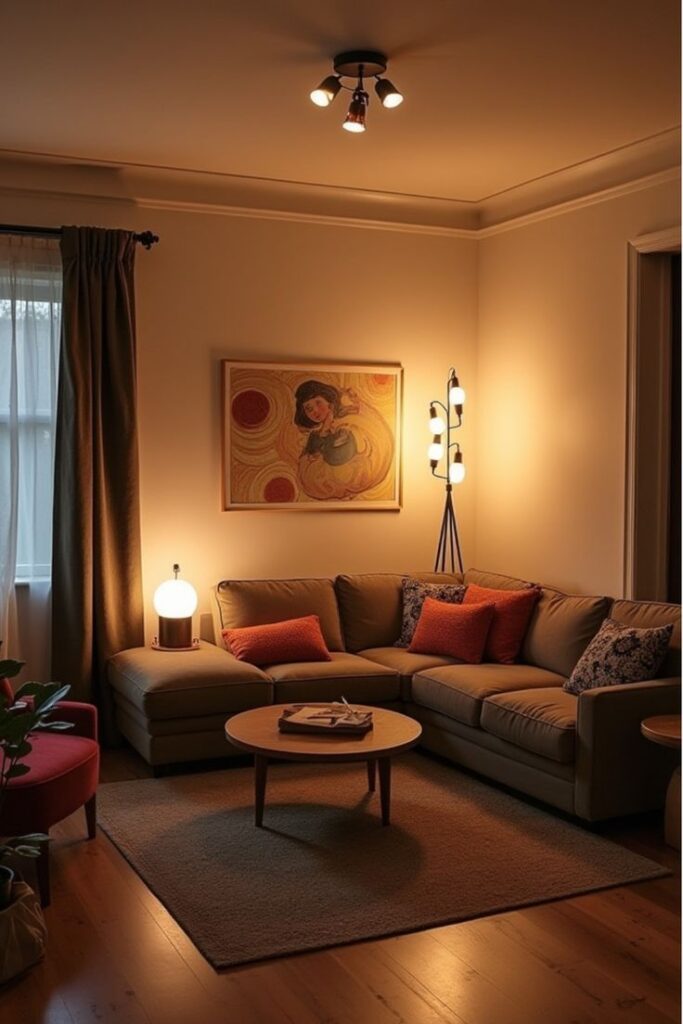
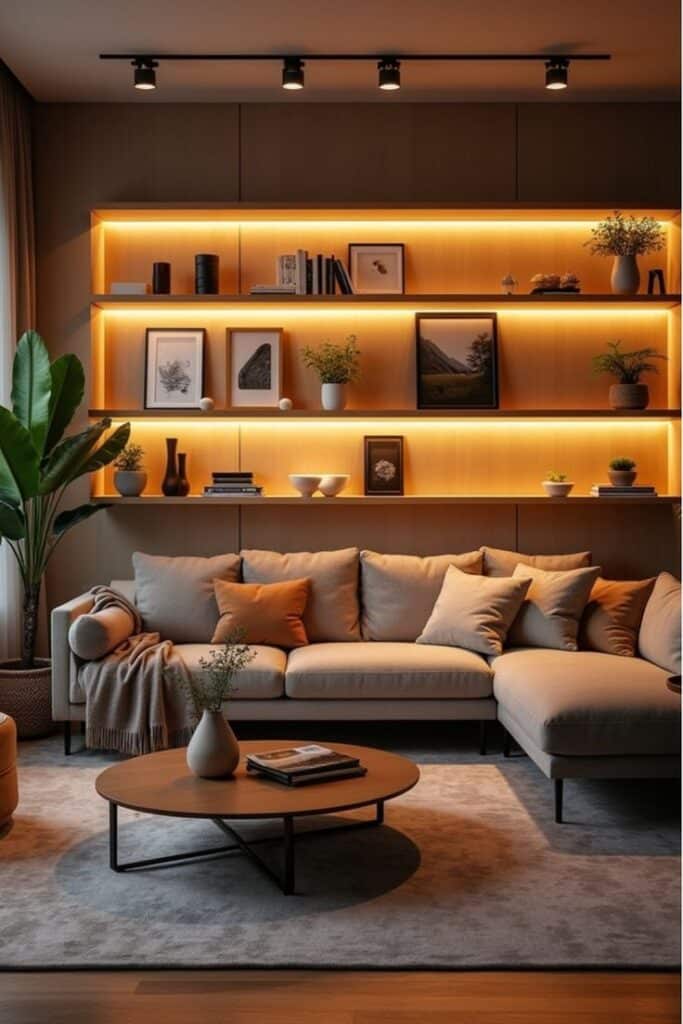
Creative Lighting Ideas for Cozy Spaces
Transforming your home into a cozy retreat requires thoughtful lighting choices that create warmth and dimension. The right lighting elements can dramatically change the mood of any room while reflecting your personal style.
Candles and Lanterns for Ambient Warmth
Candles create an unmatched atmospheric glow that instantly makes any space feel more intimate. Place pillar candles of varying heights on coffee tables or mantels to create visual interest and a soft, flickering light. For safety, consider flameless LED candles that mimic the warm glow of real flames without the fire hazard.
Lanterns offer versatility in both indoor and outdoor spaces. Metal lanterns with intricate cutout patterns cast beautiful shadow designs on walls and ceilings. Try hanging Moroccan-inspired lanterns from ceiling hooks for an exotic touch, or group several on your porch for a welcoming entrance.
Paper lanterns provide a softer, diffused light perfect for bedrooms or reading nooks. These affordable options come in various sizes and colors to match any décor scheme.
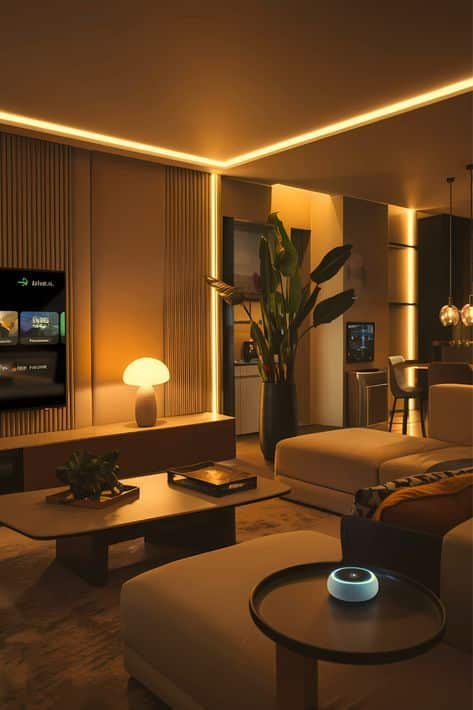
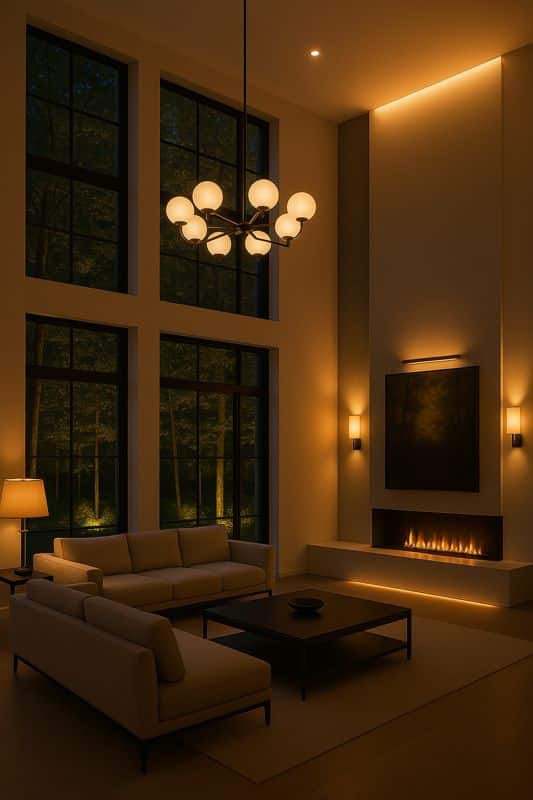
Decorative String Lights and Fairy Lights
Fairy lights have moved beyond seasonal decorations to become year-round lighting solutions. Drape them across headboards, wind them through bookshelves, or arrange them in glass jars for magical miniature light displays.
String lights with larger bulbs create a more substantial visual impact. Edison-style bulbs with exposed filaments add vintage charm to dining areas or outdoor patios. These lights can be strung overhead to define a space or frame windows and doorways.
Creative placement ideas:
- Weave lights through potted plants for a subtle glow
- String them inside a canopy over your bed
- Outline a mirror or artwork to add depth
- Use battery-operated versions inside closed cabinets with glass doors
Using LED Strip Lights for Versatile Illumination
LED strip lights offer remarkable flexibility for creating cozy atmospheres. Install them under kitchen cabinets, behind headboards, or along stairways for subtle guidance lighting. Many modern options connect to smart home systems, allowing you to adjust brightness and even color to match your mood.
For maximum coziness, choose warm white LED strips (2700K-3000K) rather than cooler tones. This temperature range mimics the golden hour sunlight that naturally makes spaces feel more inviting.
Enhance architectural features by using LED strips to highlight bookshelves, ceiling beams, or crown molding. This indirect lighting creates depth while eliminating harsh shadows. For reading nooks or workspaces, position strips to provide task lighting that doesn’t produce eye strain.
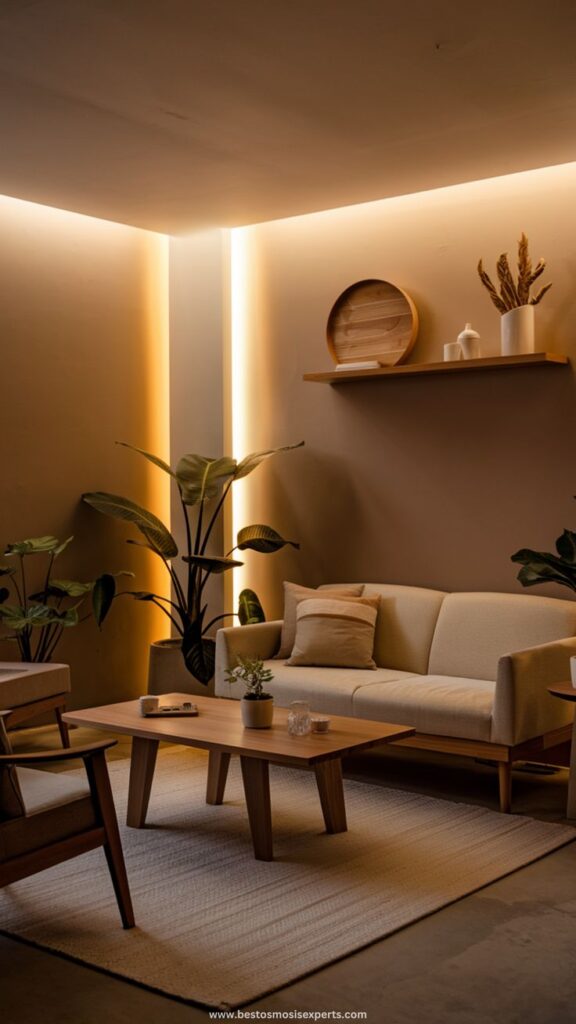
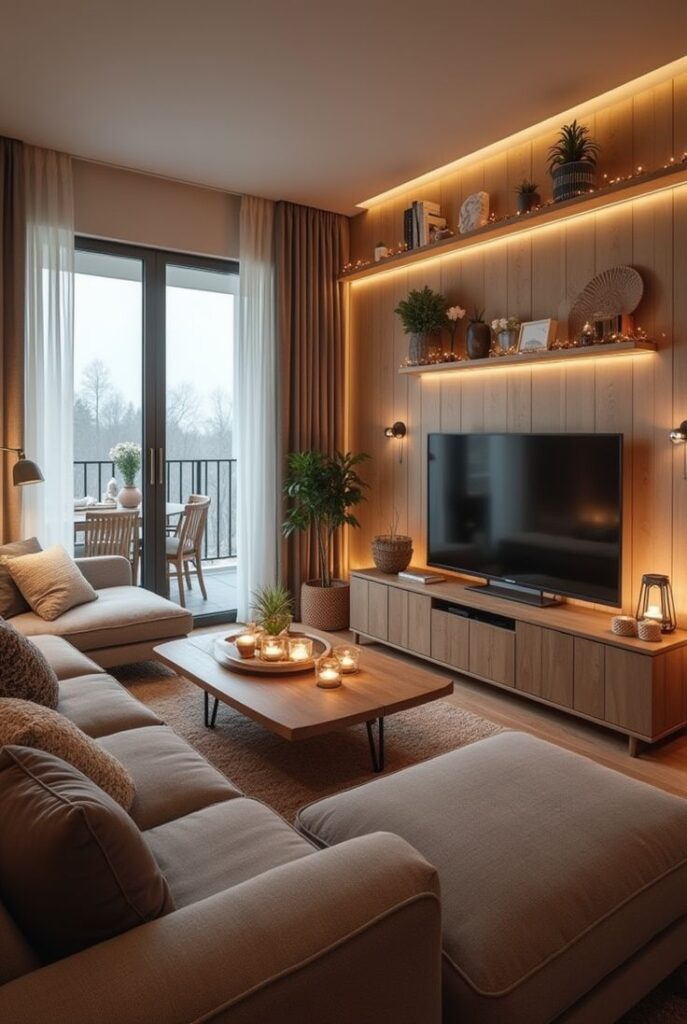
Room-by-Room Cozy Lighting Strategies
Each room in your home serves different purposes and requires specific lighting approaches to create the perfect cozy atmosphere. Strategic placement of lights at various heights and intensities creates depth and warmth throughout your living spaces.
Living Room Lighting
Your living room demands versatile lighting to accommodate various activities and moods. Start with ambient lighting from a central fixture with a dimmer switch to control brightness levels throughout the day.
Layer in floor lamps near seating areas to create warm pools of light that invite conversation. Position these slightly behind chairs or sofas to avoid direct glare while reading or watching TV.
Table lamps on side tables or consoles add another dimension of light at mid-height. Choose lampshades that diffuse light softly rather than directing it downward for a gentler effect.
Consider uplights in corners to wash walls with light, eliminating harsh shadows and making the room feel larger and more inviting. Warm white bulbs (2700K-3000K) produce the coziest effect compared to cooler temperatures.
Pro tip: Install separate switches for different light sources to create multiple lighting scenes with minimal effort.
Bedroom Lighting
Your bedroom requires lighting that transitions from practical to relaxing. A central ceiling fixture works for general illumination but should include a dimmer for evening wind-down periods.
Bedside table lamps are essential for reading without disturbing your partner. Choose adjustable options that direct light precisely where needed, with shades that block light from your partner’s side.
Wall-mounted sconces save valuable nightstand space and provide focused light exactly where you need it. Position these at shoulder height when seated in bed for optimal reading light.
For a truly cozy atmosphere, incorporate string lights around headboards or mirror frames. These provide a soft glow perfect for evening relaxation while avoiding the harshness of overhead lighting.
Lighting temperatures to consider:
- Morning routine: 3000K-3500K
- Evening relaxation: 2700K warm white
- Reading: 3000K with sufficient brightness
Reading Nook and Task Lighting
A well-lit reading nook transforms any corner into a cozy retreat. Position an adjustable floor lamp behind your favorite chair to direct light over your shoulder, preventing eye strain and shadows on your reading material.
Task lighting should be 2-3 times brighter than your ambient room lighting. A lamp with 800-1100 lumens provides adequate brightness without being harsh for extended reading sessions.
Choose a lamp with a flexible neck or articulating arm to customize the angle. This allows you to redirect light as needed without moving the entire fixture.
For digital reading, consider lights with blue light filtering capabilities. These reduce screen glare and help maintain your natural sleep cycle when reading in the evening hours.
Ideal reading light setup:
- Position: Light coming from behind and over your shoulder
- Brightness: 800-1100 lumens
- Color temperature: 3000K-3500K
- Height: Adjustable to prevent direct glare
Lighting for Intimate Gatherings
Creating the perfect atmosphere for entertaining starts with layered, dimmable lighting. Install a central fixture on a dimmer switch and keep it at 50-60% brightness to establish a warm baseline glow.
Accent lighting becomes crucial for intimate gatherings. Place small table lamps or candles at different heights throughout your entertaining space to create visual interest and conversation-friendly light pools.
Consider battery-operated or rechargeable accent lights for flexibility. These can be placed on mantels, bookshelves, or dining tables without requiring nearby outlets.
Wall sconces at eye level when seated provide flattering light for faces during conversations. Position these around 5-6 feet from the floor and space them evenly to eliminate harsh shadows.
For dinner parties: Pendant lights hung 30-36 inches above the table create an intimate dining zone while providing sufficient illumination for meals.
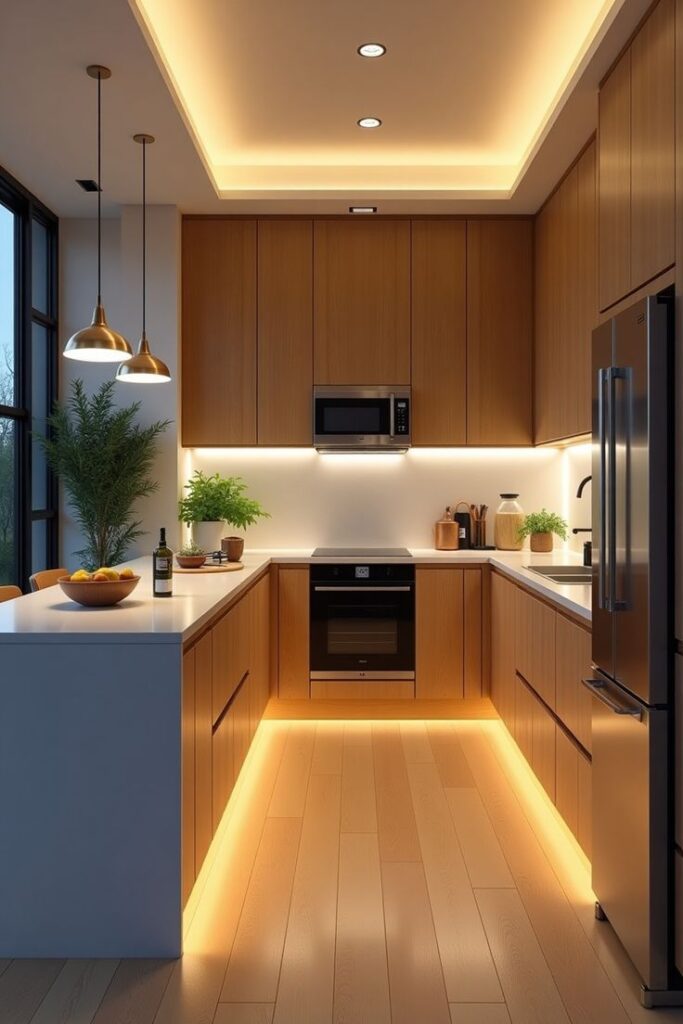
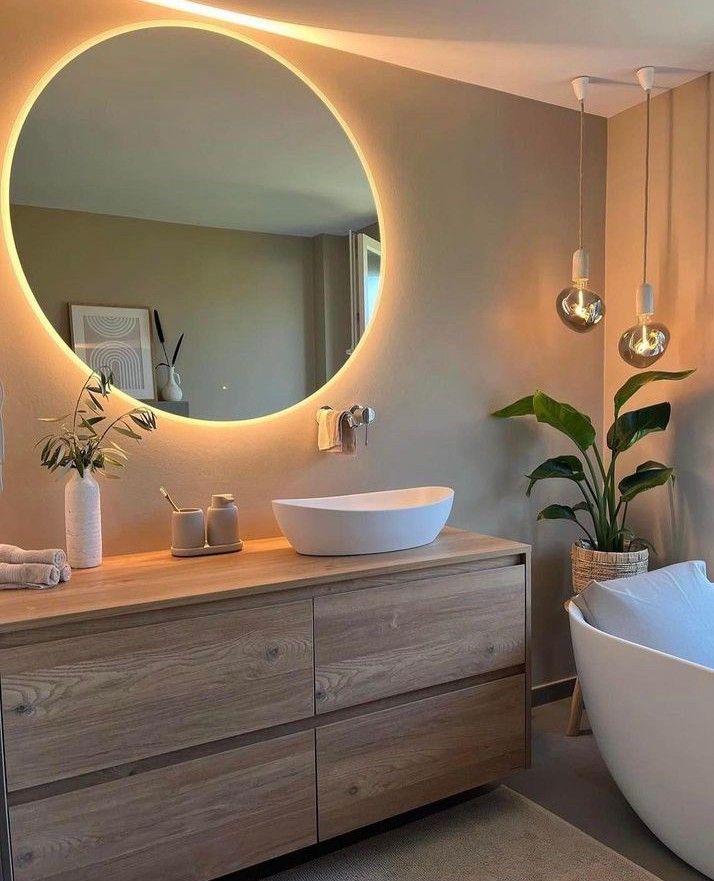
Smart Solutions and Advanced Lighting Controls
Modern lighting technology has transformed how we illuminate our homes, offering unprecedented control and customization options. Today’s smart systems can adapt to your lifestyle while saving energy and enhancing your home’s ambiance.
Integrating Smart Lighting Systems
Smart lighting systems have revolutionized home illumination with features that extend far beyond basic on/off functionality. Platforms from companies like Lutron, Crestron, and Legrand offer comprehensive control through smartphone apps, voice commands, and automated scheduling.
Smart bulbs provide the simplest entry point, requiring minimal installation while offering color temperature adjustments and dimming capabilities. For more sophisticated setups, consider whole-home systems that integrate with existing keypads and switches.
The market for lighting control systems is projected to reach $29.8 billion by 2030, reflecting growing consumer interest in both convenience and energy efficiency. Many systems allow you to create personalized scenes for different activities—bright for cooking, warm for relaxing, and dynamic for entertaining.
Utilizing Natural Light with Artificial Sources
Harmonizing natural and artificial light creates balanced, energy-efficient spaces that support your wellbeing. Position furniture and mirrors strategically to maximize daylight penetration, then supplement with artificial lighting as the day progresses.
Smart systems can automatically adjust your artificial lighting based on available sunlight. Light sensors detect ambient brightness levels and dim or brighten fixtures accordingly, maintaining consistent illumination while reducing energy consumption.
Try layering different light sources at various heights to create depth and eliminate harsh shadows. Combine overhead fixtures, task lighting, and accent lights to mimic the multidimensional quality of natural light.
Tunable white lighting technology allows you to match artificial light to the color temperature of natural daylight—cooler in mornings, warmer in evenings—supporting your circadian rhythm and enhancing comfort.
- 365shares
- Facebook0
- Pinterest365
- Twitter0

